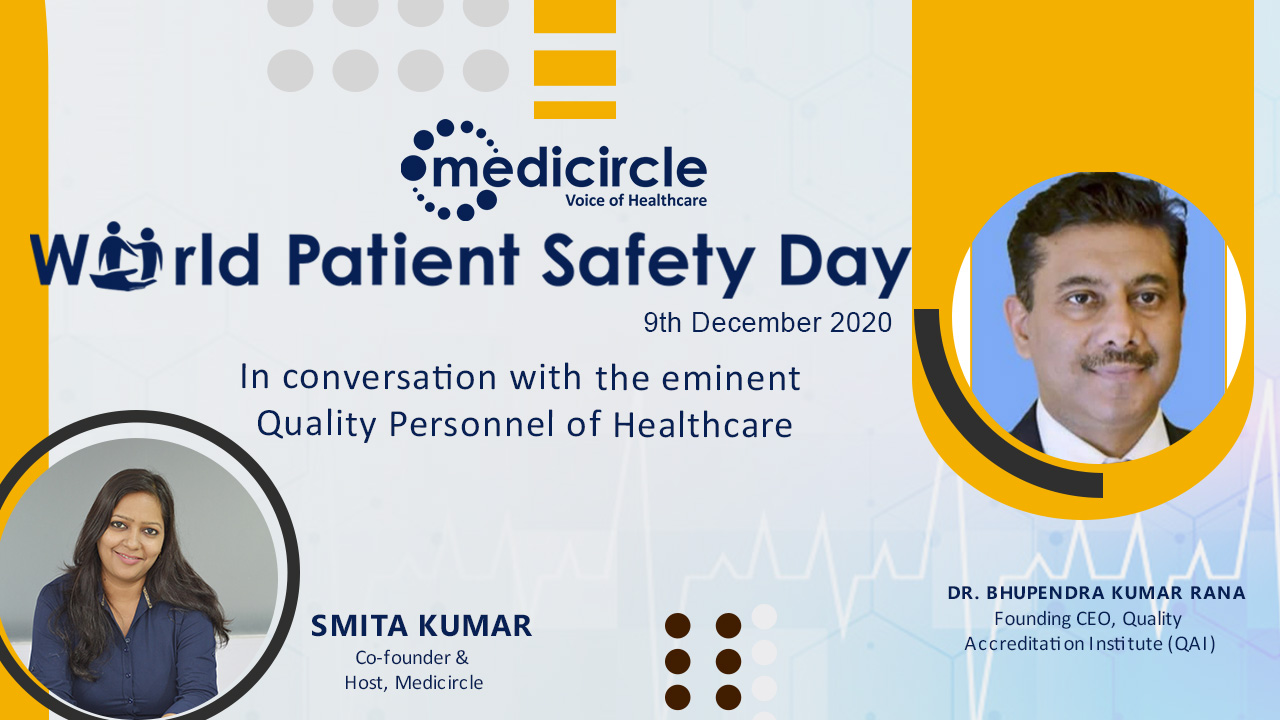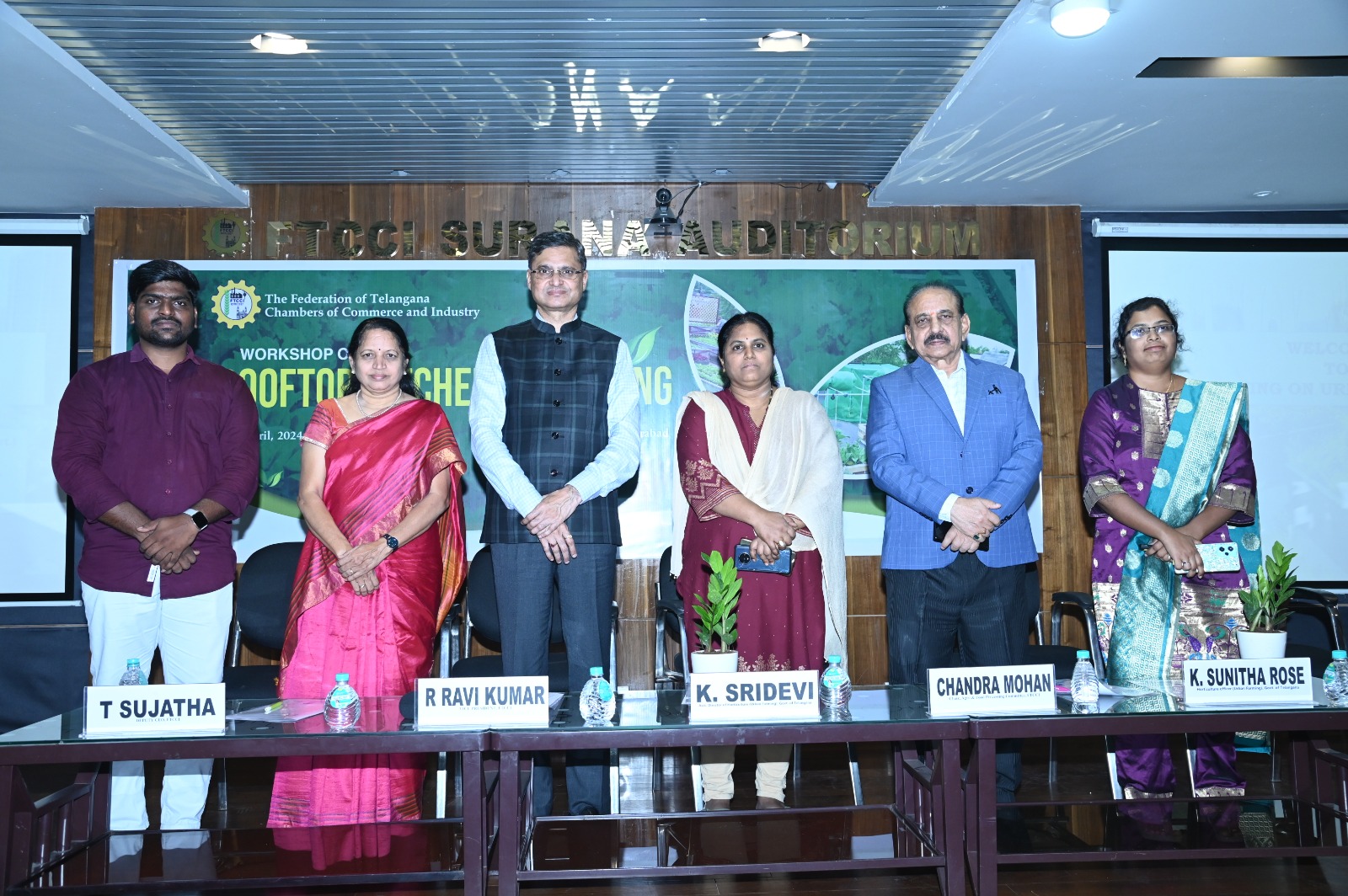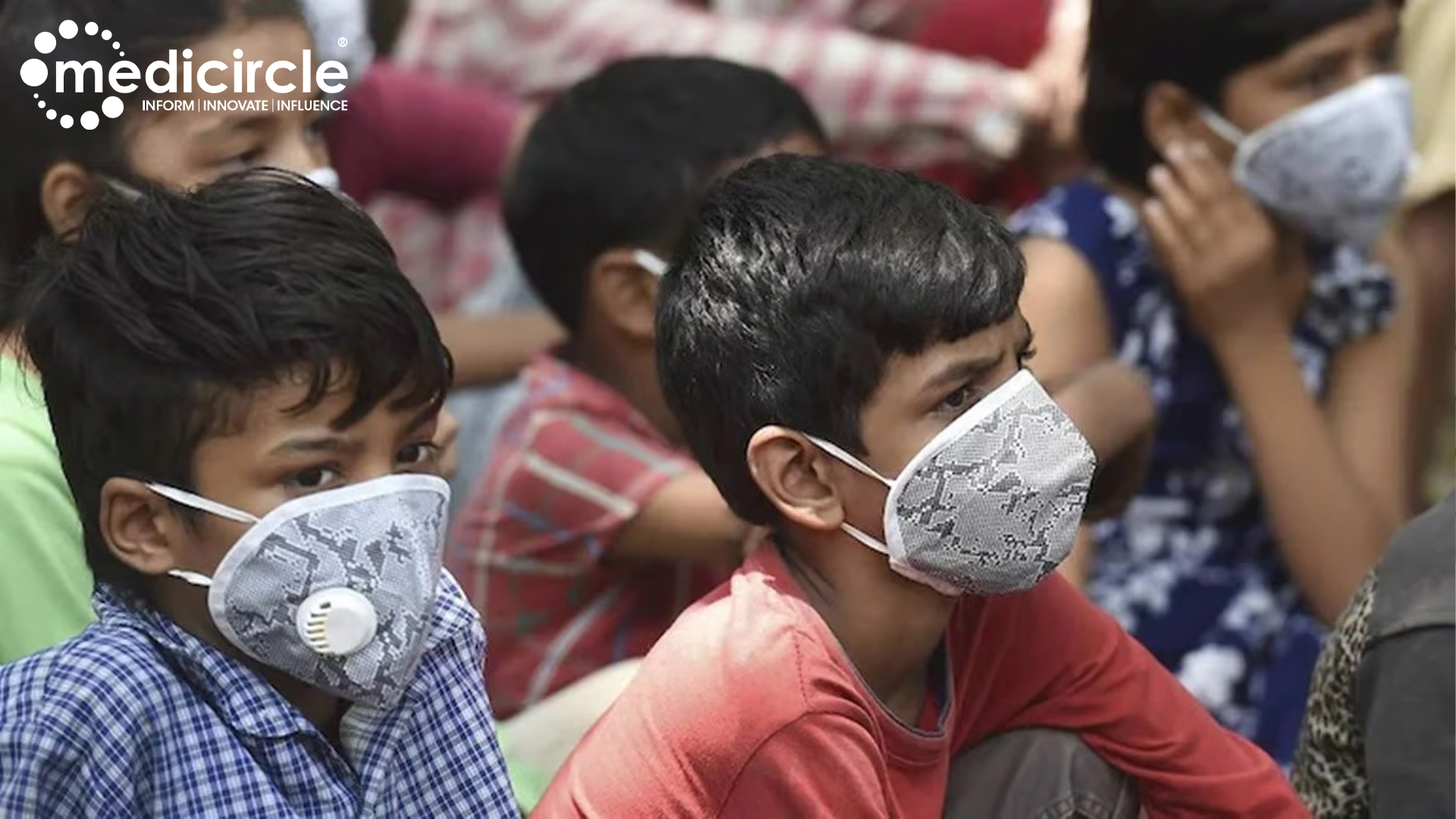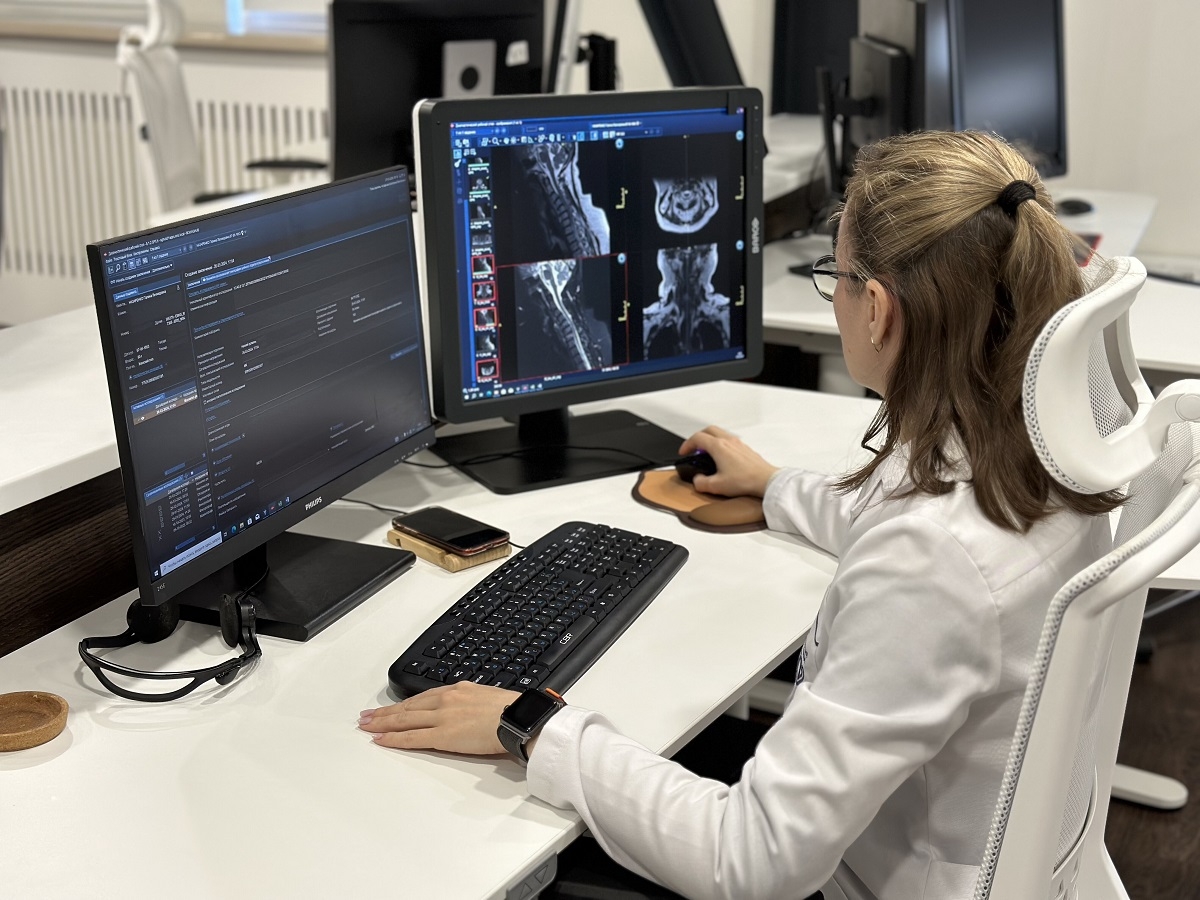Patient safety is the absence of preventable harm to a patient during the process of health care and the reduction of the risk of unnecessary harm associated with health care to an acceptable minimum.
Dr. Bhupendra Kumar Rana, Founding CEO, Quality Accreditation Institute (QAI) is a committed Global Leader in Healthcare Quality Improvement, Accreditation and Patient Safety.
Quality Accreditation Institute (QAI) was set up to create an ecosystem of education, training, quality improvement, and accreditation.
Evergreen topic - safety for staff and health care workers
Dr. Bhupendra shares his thoughts, “My thoughts are the same as people around the world. And patient safety is the priority on the global agenda. Not just WHO but many other international organizations as well as national governments. COVID-19 has led everyone around the world to think more in direction but COVID-19 has also taken us to a next level of safety that is workers’ health care workers safety, as you know, COVID-19 disease which is caused by SARS COVID to is very contagious and it's spread like anything, and therefore, the health care workers who are providing care to their patients are at high chances of getting this infection. So this year's theme of patient safety day on 17th September basically was focused on safety for staff and health care workers. And because this time this topic is evergreen, I would say and you can talk about this topic anytime but currently in COVID-19, safety is very critical and important,” he says.
Safe health workers, safe patients
Dr. Bhupendra explains, “The first International patient safety Day was celebrated in 2019 and 2020 was the second year of celebration. But unfortunately, because of COVID-19, healthcare worker safety, talk about health care workers who are at the front of care in a hospital or health care facility and ensure that the patient remains safe. So if you want your patient to be safe, you want to achieve patient safety. It is very important that we want to ensure the healthcare worker safety as well. If they are not saved, then there will be no care and there will be no safety of patients. So we have to really put a lot of effort into ensuring the healthcare worker safety. So personally and my organizations have done a lot in that we have done a lot of awareness campaigns, we designed specific posts to be circulated to hospitals to display at their hospitals, again, entry gate and prominent areas so that not only the healthcare workers but patients and visitors can also look at it. And we also did, for the last two years, recognizing patient safety champions. This year, we chose specifically health care workers who are contributing to their own safety, ensuring patient safety, so healthcare workers, we run these and no sort of recognition program. We gave the certificate to people who have really shown that they have done good work in patient safety and health care worker safety,” he says.
Bringing efficiency and effectiveness in care
Dr. Bhupendra sheds light on the subject, “Since the last several months we are talking about digital health. But it has been in place for the last several years in many developed countries. And thankfully, our ministry of health now has launched the national digital health mission - NDHM, which was actually launched by our honorable Prime Minister, Mr. Modi on 15th of August this year and so digital health is a priority for the government because it can bring a lot of efficiency and effectiveness in care and the services being offered by hospitals. And also, it created a good database of information about and not only just the patient but the healthcare providers, individual doctors, the hospitals. So digital health is a very timely intervention across the globe, particularly in India, as we see the development of India Chairman the National Health digital health blueprint, which is being spearheaded by National Health Authority, and it is a good change and would be a game-changer because it will help everyone, the provider - because any provider can access the information of the patient and the patient and from the hospital, the patient - because he or she need not carry all the records with him or her when they get the patient ID which is unique it will be tagged and that can be accessed anywhere in the country by any healthcare providers, for stakeholders like insurance companies and payers and definitely for the government as well. So it would provide an integrated approach of health care service delivery model in our country and particularly, we envisage this even before this thing started here India after this telemedicine practice guideline was formally notified by the ministry on in the month of March after COVID has started killing people and taken a lot of toll on the healthcare facilities as well. So, we at QAI started thinking about how we can contribute towards this and how we can bring out a product, which can help everyone around in this digital health care. So we develop a set of accreditation standards for telehealth and telemedicine. And this is my first time in India. And the first time in many parts of the world. So, we are at the forefront of, leading this change to standardize. We say telehealth telemedicine digital health. But there are a lot of things that should not go towards a sort of call center approach because we can't see who is there. So there needs to be a process in place, there should be protocols in place, there should be a mechanism to see how they are providing services to patients. So it's very important and I think digital health would definitely have revolutionized the things in healthcare in India,” he says.
Ensuring proper patient safety
Dr. Bhupendra explains, “There are different types of errors happening in the healthcare facility. And as you've mentioned it anything from medication errors to surgical errors to many other issues, which really affect patients and most importantly, most of them are very much preventable, how we ensure that actually these preventable harms, which are happening around the globe around the world, in hundreds of numbers can be prevented and therefore, we have been lost in my current role and in my previous role, I have been advocating the role of accreditation as these standards bring a framework which takes care of all the issues. The traditional standard requires a healthcare facility to look at the governance, the management leadership, the human resources, your facility, then the Information System, infection, prevention protocols, medication safety and how they manage the medications and how the information is meant. So there's a whole continuum of care to the patient and whole continuum of healthcare service delivery within a hospital and is a standard factually required hospitals to put a lot of policies and procedures in place, protocols to follow which to you know, avoiding these type medication errors. So, several example medication errors, when they happen, they happen at different stages. As you know, once a doctor writes it so there are prescription errors, the doctor prescribed some medicine A but the pharmacist gives B and so it goes on to be wrong. So we say that should be legibly written other capital letters or maybe type so that whatever is written is given many times like BDS, TDS, OD we don't understand many patients don't understand what it means? So a standard says weekly or you say two times a day, once a day, three times a day before a meal after meal, mention it so that even a layman it patient can understand you know, and then the second thing happens if one prescription is done then it's issued from the pharmacy. So there is a high risk. And the third step is reaching is to the patient, so prescription dispensing and administration of the drug, confirm before it is given that this is the dose, this is the route, this is the time, and this is the patient, so it will check everything and we will minimize it. Know – Check- Ask is what has been the proposed global agenda by WHO. So both patient and doctor should know what medication is being given. And what he's going to take, check it - the doctor should check patient, check if this is the medicine which is being prescribed. And if you don't understand then recheck what is the medication, how it is to be taken, what is the record, you know check to ask is global agenda by WHO for patient safety for medication without harm. Similarly, in areas of infection prevention, bedsores, seven different types of infections fall adverse incidents. So these are preventable. And the standards for accreditation helps them build this framework,” he says.
(Edited by Rabia Mistry Mulla)

 “There's a whole continuum of care to the patient and whole continuum of healthcare service delivery within a hospital and is a standard factually requires hospitals to put a lot of policies and procedures in place,†says Dr. Bhupendra Kumar Rana, Founding CEO, Quality Accreditation Institute (QAI).
“There's a whole continuum of care to the patient and whole continuum of healthcare service delivery within a hospital and is a standard factually requires hospitals to put a lot of policies and procedures in place,†says Dr. Bhupendra Kumar Rana, Founding CEO, Quality Accreditation Institute (QAI).

































